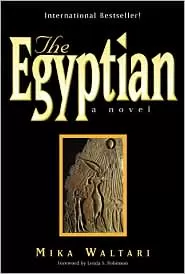Mika Waltari
When it comes to international repute, Mika Waltari's (1908–1979) sole competitor in Finnish literature is the national epic, Kalevala.
In Finland too the extensive and variegated production of this master
of narrative has maintained its reputation and reading audience nearly
half a century after the end of the author's most powerful creative
phase. Waltari's books continue to be read by young and old alike,
sparking interest among ordinary readers and literary scholars.
Waltari's genius emerged early on. Even as a twenty-year-old he was a
prominent figure in the Finnish literary movement known as Tulenkantajat (the Flame-bearers), which sought to throw open the windows of Finnish literature to Europe. His first novel, Suuri illusioni (1928; Grand illusion), which depicted à la Fitzgerald the lost
generation following the first world war, was a huge success in Finland.
Waltari is best known both in Finland and abroad for his vast historic novels. The first of the series was Sinuhe egyptiläinen (1945; The Egyptian,
1949), a projection of the writer's own sense of post-war pessimism
onto the life of an Egyptian physician living in the 14th century BC.
The novel became a world-wide bestseller. The Egyptian was followed by an array of
historic novels set in various epochs, all of them depicting the
problematic lot of the individual in an age of immense historic change.
All are imbued with Waltari's humanistic view of life, which in his
later work began to take on a religious cast.
Unprejudiced and skilled at adaptation, Waltari managed during his
career to experiment with most existing literary genres: his pen
yielded poetry, fables, plays, travel books, essays, horror stories,
short stories, novellas and light reading, some of which appeared in
magazines under a pen name. He was also the first notable Finnish
practitioner of detective fiction: his 'Commissioner Palmu' novels are
also known through their Finnish film versions.


